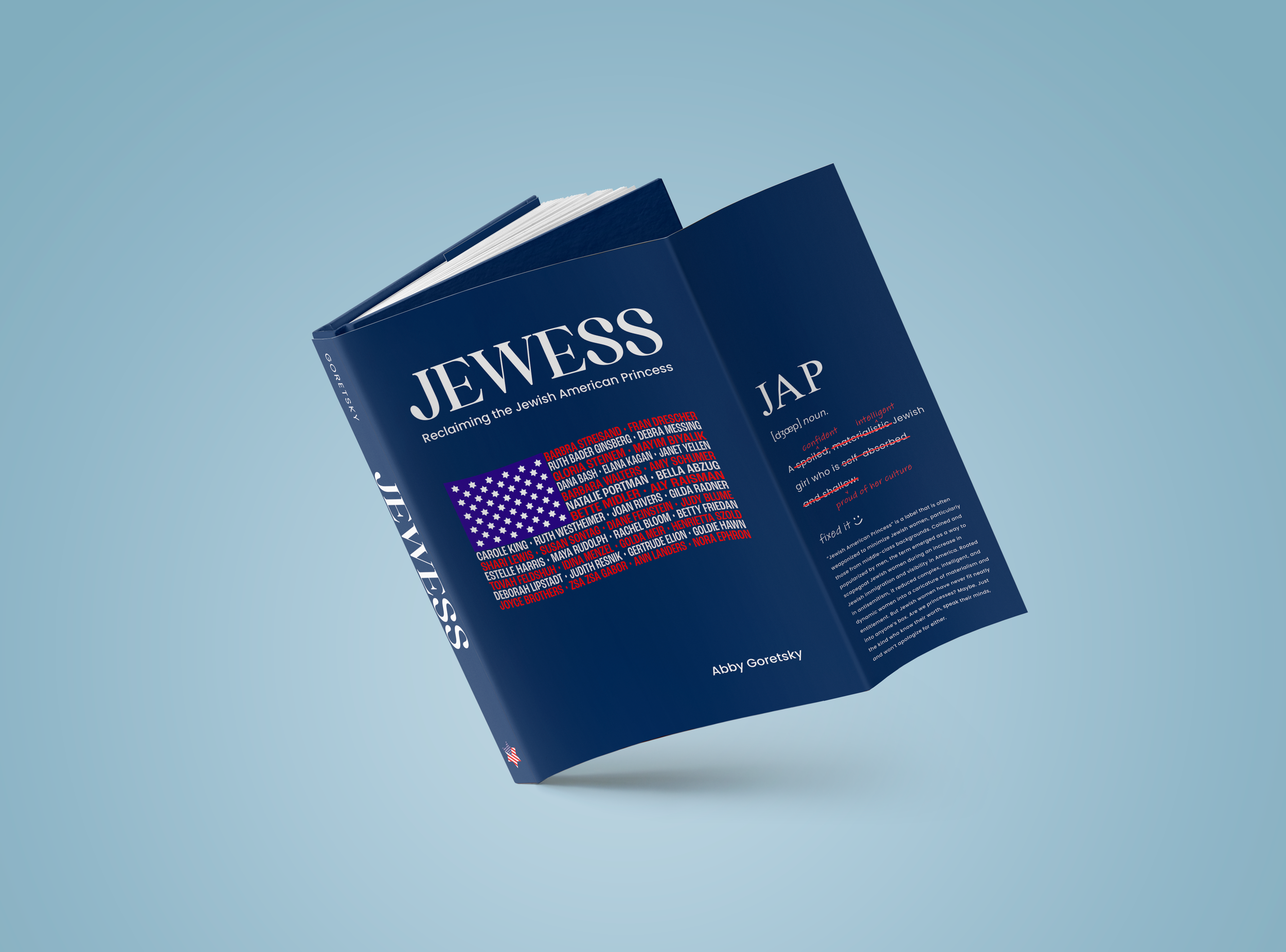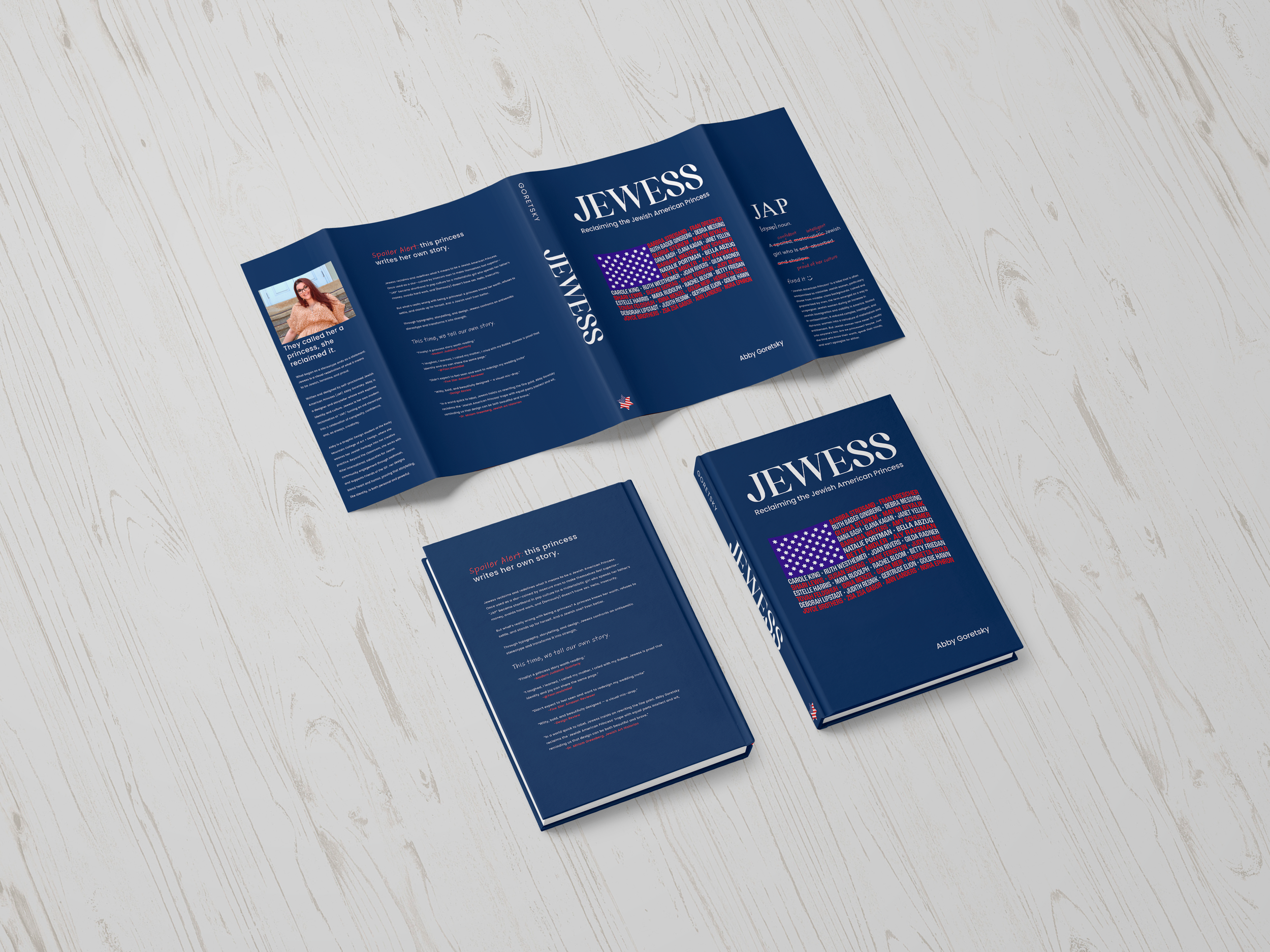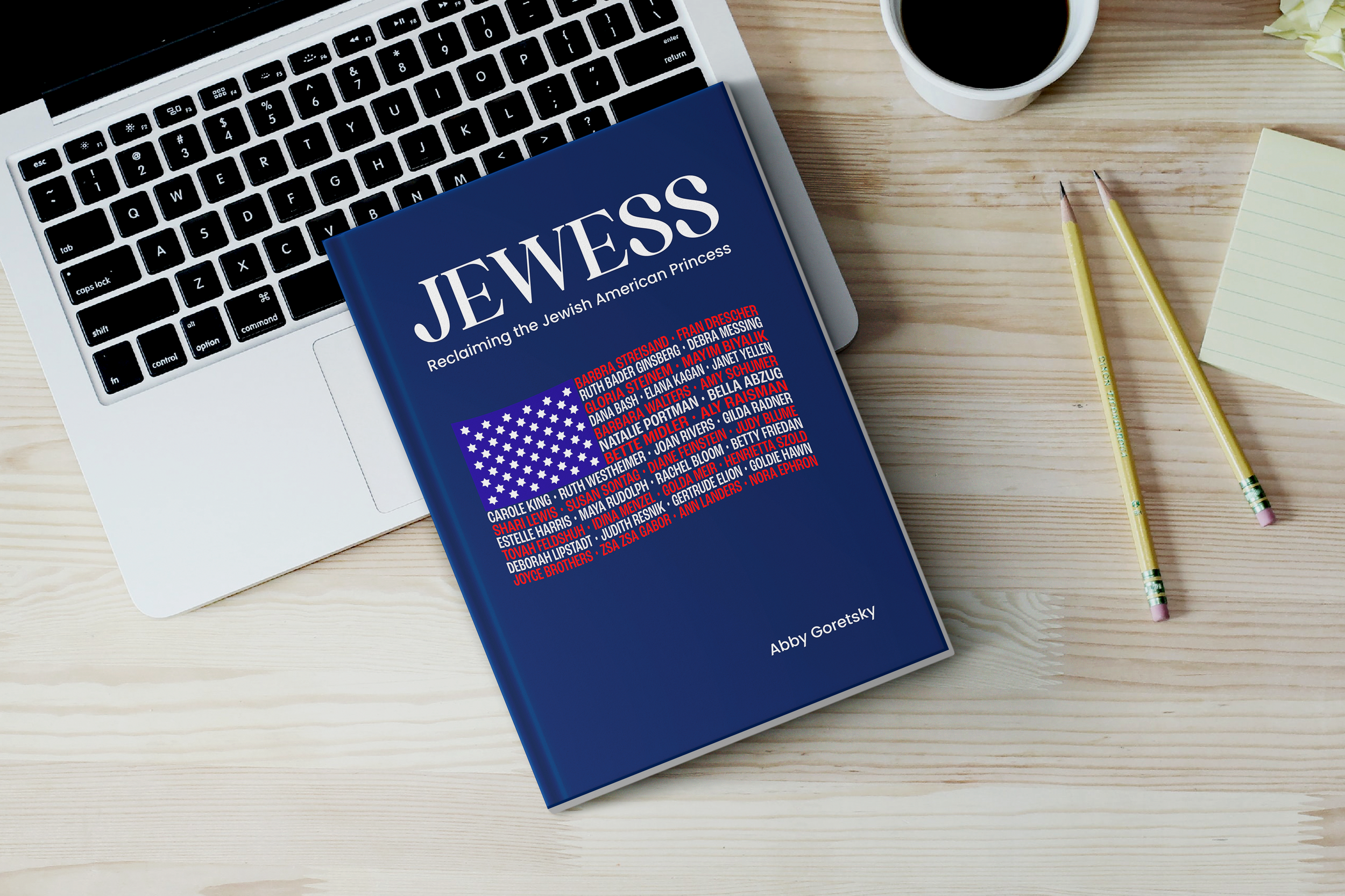
Jewess
Project Type
Research Design
Keywords
Reclamation, Identity, Pride
Year
2024, 2025
Jewess began as a class assignment exploring the origins and cultural implications of the term “Jewish American Princess.” The project challenged me to think critically about stereotype, identity, and representation, then translate that research into a powerful visual statement. What started as a single magazine cover honoring Jewish American women I admire evolved into a full book jacket that felt much more personal. I wanted to reclaim a harmful label through design, turning it into something rooted in pride, identity, and strength.
I chose Adoha for the Jewess masthead because its sculptural letterforms capture the confidence and sophistication of a magazine title. Poppins provides a clean, modern balance for subheads and body text, keeping the layout readable and grounded. Finally, Adobe Handwriting Tiffany adds personal, handwritten accents that cross out or rewrite words, a visual nod to the project’s theme of personally reclaiming and rewriting identity.
Type Choice
I used red, white, and blue as both a nod to the American flag and a commentary on cultural identity. These colors connect the project to the “American” in Jewish American Princess while reclaiming them as symbols of pride, strength, and belonging. The palette honors heritage while reimagining what patriotism and representation can look like through a Jewish lens.
Color Choice
This project started with choosing a vague topic to research, then creating a word tree to narrow the focus. I knew I wanted to explore my heritage as a Jewish woman, so I branched into ideas like tradition, religion, history, and, of course, stereotypes. The term “JAP” has always fascinated me, so I decided to use this project as an opportunity to research it more deeply and examine its cultural impact.
Choosing ‘JAP’
I could choose any medium we wanted, which was both exciting and a little overwhelming. I went with digital, since it’s my favorite way to design. After exploring a few directions, I decided on a magazine cover because I’ve always loved editorial design and how it combines type, image, and story. From the start, I knew I wanted to highlight the diversity of Jewish American women and show that there’s no single version of what “Jewess” means.
Concepts & Sketches
This was the original stopping point before I came back for my portfolio. I chose to create a typographic flag because I wanted to explore how typography can be used as a powerful visual statement. It also gave me the chance to highlight so many incredible Jewish women who inspire me. One of my favorite comments on this piece came from a peer who said the design encouraged them to look up some of the names they didn’t recognize — that moment showed me I had achieved exactly what I hoped for.
In Progress
Fun Fact!
This piece was selected to be displayed in the Rocky Mountain College of Art + Design’s 61st Annual Student Exhibition. It was such an honor to have Jewess recognized and shared alongside the work of so many talented peers.
When I started building my portfolio, I knew I wanted to include Jewess, but I also knew I wanted it to be more. So, I decided to expand it! With my professor’s guidance, I transformed the original magazine cover into a full dust jacket, turning a single-page design into a more powerful, comprehensive visual story.
Revisiting the Project
After some reflection, I made a few key changes, including lightening the background and reworking the layout to better mimic a real book. Now I finally landed on my new version of Jewess. This redesign became a true act of reclamation, where I was finally able to take ownership of the term and transform it into something empowering.
The New Final
I believe I achieved that intent by transforming a stereotype into something empowering and deeply personal. Expanding the project into a full dust jacket gave me room to tell a stronger visual story through typography, color, and tone. In the end, Jewess became more than just a design exercise, but also a reflection of my voice, my culture, and the power of reclaiming identity through art.
Intent





